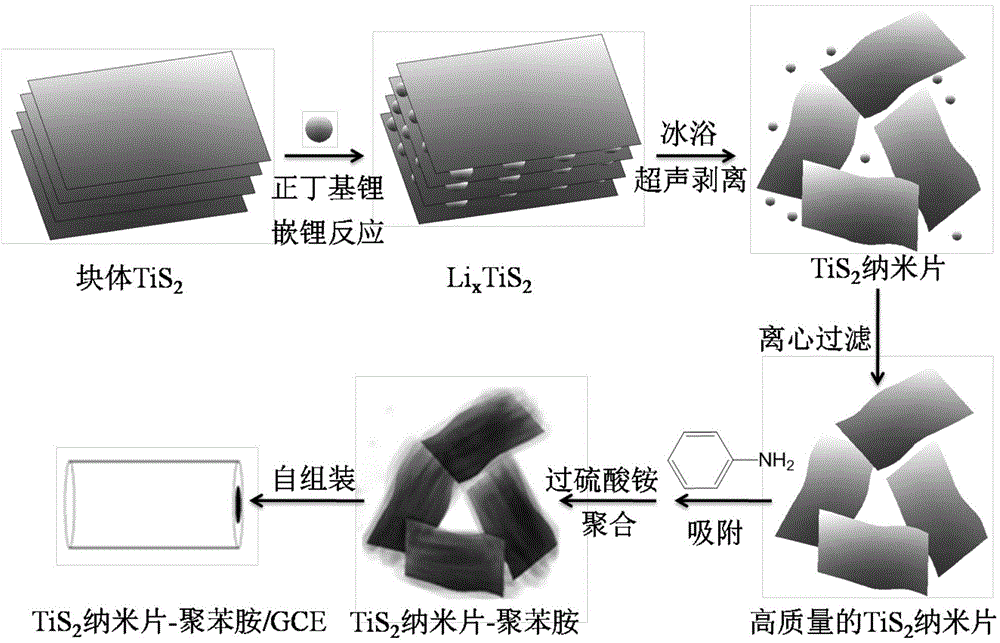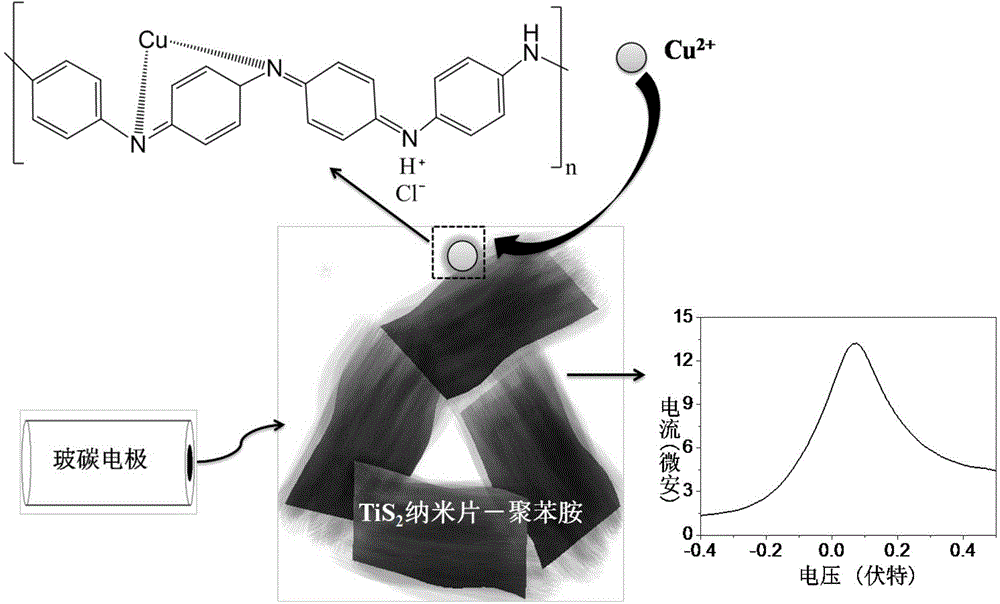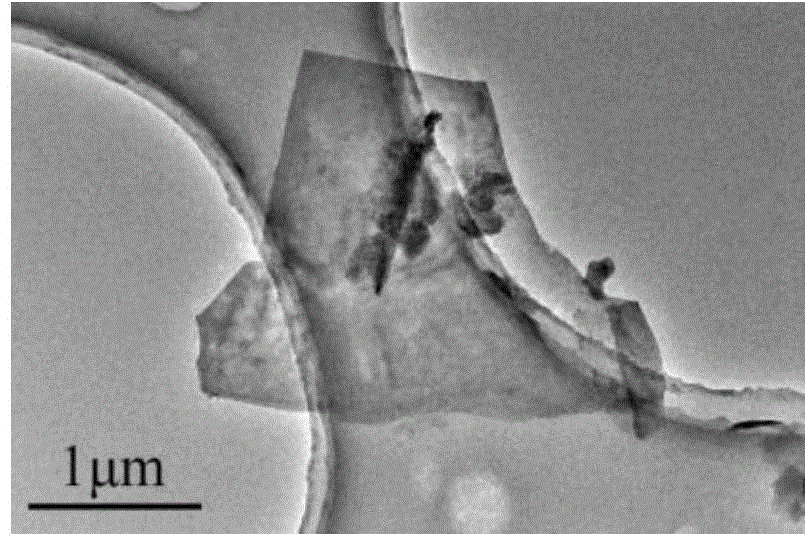Preparation method and application of TiS2 nanosheet-polyaniline-based electrochemical sensor for trace copper ion detection
A copper ion detection, polyaniline-based technology, applied in the field of environmental analysis, can solve the problems of harsh detection conditions, insufficient sensitivity and selectivity, secondary pollution, etc., and achieve the effects of high selectivity, high sensitivity and low noise value.
- Summary
- Abstract
- Description
- Claims
- Application Information
AI Technical Summary
Problems solved by technology
Method used
Image
Examples
Embodiment 1
[0037] A TiS for Trace Copper Ion Detection 2 Nanosheet-polyaniline-based electrochemical sensor, the construction process is as follows figure 1 shown, including the following steps:
[0038] (1) 15mg bulk TiS 2 Add 4.5mL of 0.278M n-butyllithium solution diluted with n-hexane, react in an anhydrous and oxygen-free environment at 60°C for 12h, filter and wash with anhydrous methanol and n-hexane in turn to obtain lithium intercalated TiS 2 , which is Li x TiS 2 .
[0039] (2) Take a certain amount of Li obtained in step (1) x TiS 2 Added to deionized water after deoxygenation, in which 1mg Li x TiS 2 Add 2 mL of deionized water; then in an ice-water bath with N 2 Ultrasonic peeling in a protected environment for 1 hour, and separation in a centrifuge at a speed of 2500r / min for 20 minutes, the obtained supernatant is high-quality TiS 2 Nanosheets.
[0040] (3) A certain amount of TiS 2 Nanosheets were added to 10mL of mixed solution containing 0.3M aniline and 0....
Embodiment 2
[0054] A TiS for Trace Copper Ion Detection 2 Nanosheet-polyaniline-based electrochemical sensor, the construction process is as follows figure 1 shown, including the following steps:
[0055] (1) 42mg block TiS 2 Add it to 10mL of 0.4M n-butyllithium n-hexane solution, react in an anhydrous and oxygen-free environment at 65°C for 15h, filter and wash with anhydrous methanol and n-hexane in turn to obtain lithium-intercalated TiS 2 , which is Li x TiS 2 .
[0056] (2) Take a certain amount of Li obtained in step (1) x TiS 2 Added to deionized water after deoxygenation, in which 1mg Li x TiS 2 Add 4 mL of deionized water; then in an ice-water bath with N 2 Ultrasonic peeling in a protected environment for 1 hour, and separation in a centrifuge at a speed of 3000r / min for 25 minutes, the obtained supernatant is TiS 2 Nanosheets.
[0057] (3) A certain amount of TiS 2 Nanosheets were added to 10mL of mixed solution containing 0.3M aniline and 0.1M HCl, ultrasonicated ...
Embodiment 3
[0066] A TiS for Trace Copper Ion Detection 2 Nanosheet-polyaniline-based electrochemical sensor, the construction process is as follows figure 1 shown, including the following steps:
[0067] (1) 27mg block TiS 2 Add it to 6mL of 0.3M n-butyllithium n-hexane solution, react in an anhydrous and oxygen-free environment at 60°C for 12h, filter and wash with anhydrous methanol and n-hexane in sequence to obtain lithium-intercalated TiS 2 , which is Li x TiS 2 .
[0068] (2) Take a certain amount of Li obtained in step (1) x TiS 2 Added to deionized water after deoxygenation, in which 1mg Li x TiS 2 Add 2 mL of deionized water; then in an ice-water bath with N 2 Ultrasonic peeling in a protected environment for 1 hour, and separation in a centrifuge at a speed of 2500r / min for 30 minutes, the obtained supernatant is TiS 2 Nanosheets.
[0069] (3) A certain amount of TiS 2 Nanosheets were added to 10mL of mixed solution containing 0.3M aniline and 0.1M HCl, ultrasonicat...
PUM
 Login to View More
Login to View More Abstract
Description
Claims
Application Information
 Login to View More
Login to View More - R&D Engineer
- R&D Manager
- IP Professional
- Industry Leading Data Capabilities
- Powerful AI technology
- Patent DNA Extraction
Browse by: Latest US Patents, China's latest patents, Technical Efficacy Thesaurus, Application Domain, Technology Topic, Popular Technical Reports.
© 2024 PatSnap. All rights reserved.Legal|Privacy policy|Modern Slavery Act Transparency Statement|Sitemap|About US| Contact US: help@patsnap.com










